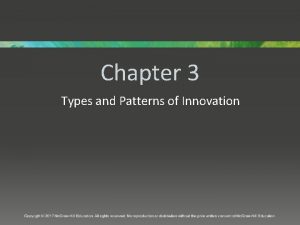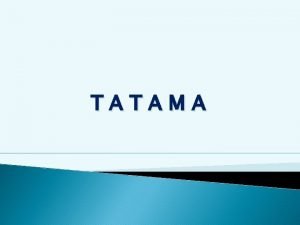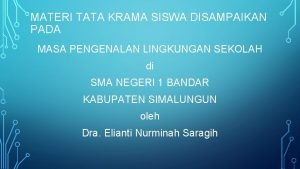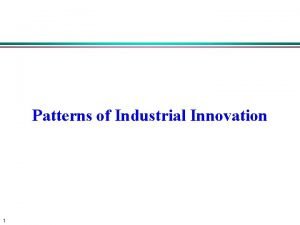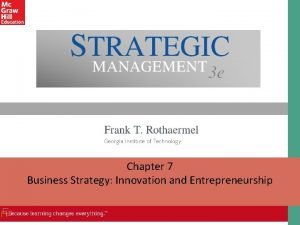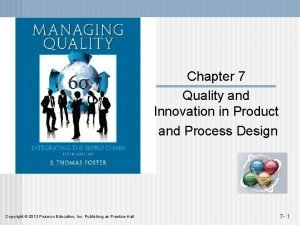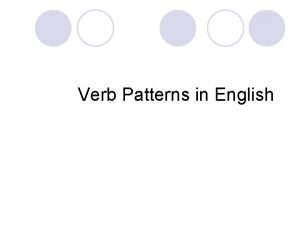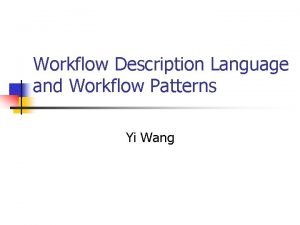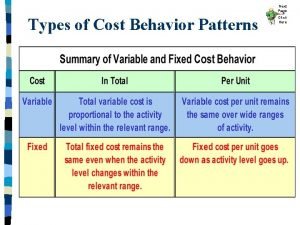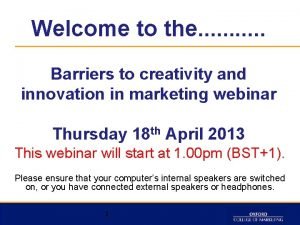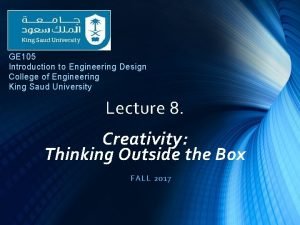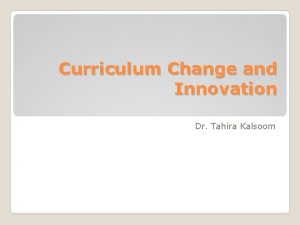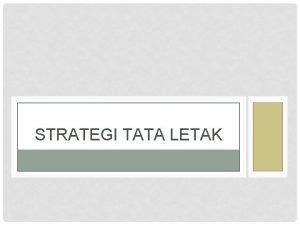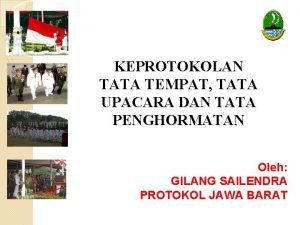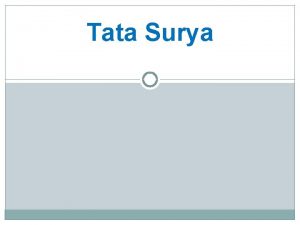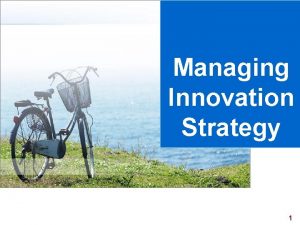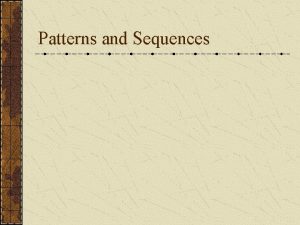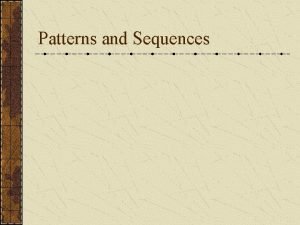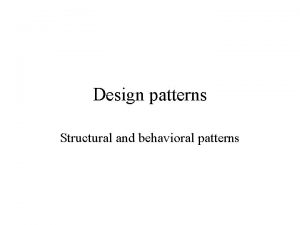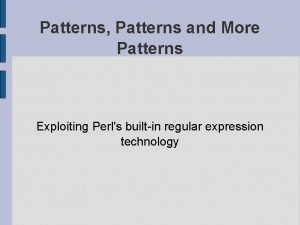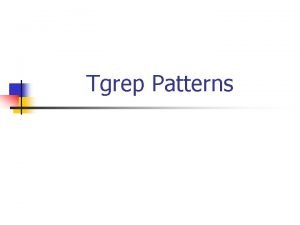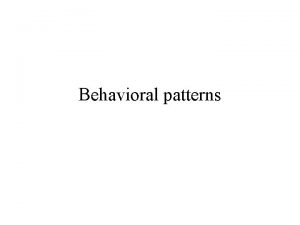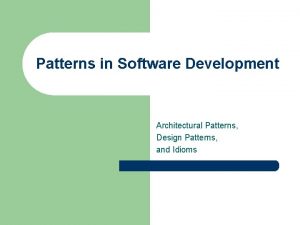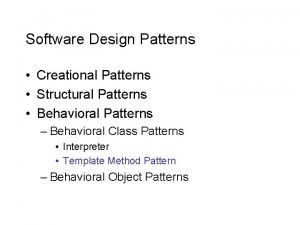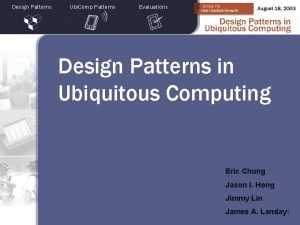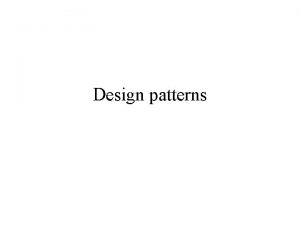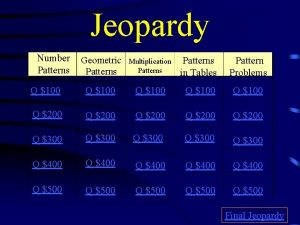Types and Patterns of Innovation 3 1 Tata



















- Slides: 19

Types and Patterns of Innovation 3 -1

Tata Nano: The World’s First Rs. 1 Lakh Car • Tata Motors spent five years working with a global network of 800 suppliers to develop the Nano – the world’s first Rs. 1 Lakh (100 K) (about $1500) car. • The Nano had a two-cylinder engine, only one windshield wiper and rear-view mirror, and no electric windows, anti-lock brakes, or airbags. • Instead of giving a design to suppliers, Tata gave suppliers free reign to try to find a way to achieve the weight and cost objectives. • Meeting these objectives was challenging; according to Girish Wagh (head of the Tata team): “the entire engine was redesigned thrice, the entire body was redesigned twice, and the floor plan of the car redesigned around ten times, the wiper system designed more than 11 times. ” 3 -2

Overview • Several dimensions are used to categorize innovations. • These dimensions help clarify how different innovations offer different opportunities (and pose different demands) on producers, users, and regulators. • The path a technology follows through time is termed its technology trajectory. • Many consistent patterns have been observed in technology trajectories, helping us understand how technologies improve and are diffused. 3 -3

Types of Innovation • Product versus Process Innovation • Product innovations are embodied in the outputs of an organization – its goods or services. • Process innovations are innovations in the way an organization conducts its business, such as in techniques of producing or marketing goods or services. • Product innovations can enable process innovations and vice versa. • What is a product innovation for one organization might be a process innovation for another • E. g. , UPS creates a new distribution service (product innovation) that enables its customers to distribute their goods more widely or more easily (process innovation) 3 -4

Types of Innovation • Radical versus Incremental Innovation • The radicalness of an innovation is the degree to which it is new and different from previously existing products and processes. • Incremental innovations may involve only a minor change from (or adjustment to) existing practices. • The radicalness of an innovation is relative; it may change over time or with respect to different observers. • E. g. , digital photography a more radical innovation for Kodak than for Sony. 3 -5

Types of Innovation • Competence-Enhancing versus Competence. Destroying Innovation • Competence-enhancing innovations build on the firm’s existing knowledge base • E. g. , Intel’s Pentium 4 built on the technology for Pentium III. • Competence-destroying innovations renders a firm’s existing competencies obsolete. • E. g. , electronic calculators rendered Keuffel & Esser’s slide rule expertise obsolete. • Whether an innovation is competence enhancing or competence destroying depends on the perspective of a particular firm. 3 -6

Types of Innovation • Architectural versus Component Innovation • A component innovation (or modular innovation) entails changes to one or more components of a product system without significantly affecting the overall design. • E. g. , adding gel-filled material to a bicycle seat • An architectural innovation entails changing the overall design of the system or the way components interact. • E. g. , transition from high-wheel bicycle to safety bicycle. • Most architectural innovations require changes in the underlying components also. 3 -7

Technology S-Curves • Both the rate of a technology’s improvement, and its rate of diffusion to the market typically follow an s-shaped curve. • S-curves in Technological Improvement Technology improves slowly at first because it is poorly understood. Then accelerates as understanding increases. Then tapers off as approaches limits. 3 -8

Technology S-Curves • Technologies do not always get to reach their limits • May be displaced by new, discontinuous technology. • A discontinuous technology fulfills a similar market need by means of an entirely new knowledge base. • E. g. , switch from carbon copying to photocopying, or vinyl records to compact discs • Technological discontinuity may initially have lower performance than incumbent technology. • E. g. , first automobiles were much slower than horse-drawn carriages. • Firms may be reluctant to adopt new technology because performance improvement is initially slow and costly, and they may have significant investment in incumbent technology 3 -9

Technology S-Curves • S-Curves in Technology Diffusion • Adoption is initially slow because the technology is unfamiliar. • It accelerates as technology becomes better understood. • Eventually market is saturated and rate of new adoptions declines. • Technology diffusion tends to take far longer than information diffusion. • Technology may require acquiring complex knowledge or experience. • Technology may require complementary resources to make it valuable (e. g. , non-digital cameras not valuable without film). 3 -10

Technology S-Curves • S-Curves as a Prescriptive Tool • Managers can use data on investment and performance of their own technologies or data on overall industry investment and technology performance to map s-curve. • While mapping the technology’s s-curve is useful for gaining a deeper understanding of its rate of improvement or limits, its use as a prescriptive tool is limited. • True limits of technology may be unknown • Shape of s-curve can be influenced by changes in the market, component technologies, or complementary technologies. (fidget spinners) • Firms that follow s-curve model too closely could end up switching technologies too soon or too late. 3 -11

Technology S-Curves • S-curves of diffusion are in part a function of s-curves in technology improvement • Learning curve leads to price drops, which accelerate diffusion 3 -12

Research Brief Diffusion of Innovation and Adopter Categories • Everett M. Rogers created a typology of adopters: Innovators are the first 2. 5% of individuals to adopt an innovation. They are adventurous, comfortable with a high degree of complexity and uncertainty, and typically have access to substantial financial resources. Early Adopters are the next 13. 5% to adopt the innovation. They are well integrated into their social system, and have great potential for opinion leadership. Other potential adopters look to early adopters for information and advice, thus early adopters make excellent "missionaries" for new products or processes. Early Majority are the next 34%. They adopt innovations slightly before the average member of a social system. They are typically not opinion leaders, but they interact frequently with their peers. Late Majority are the next 34%. They approach innovation with a skeptical air, and may not adopt the innovation until they feel pressure from their peers. They may have scarce resources. Laggards are the last 16%. They base their decisions primarily on past experience and possess almost no opinion leadership. They are highly skeptical of innovations and innovators, and must feel certain that a new innovation will not fail prior to adopting it. 3 -13

Research Brief Diffusion of Innovation and Adopter Categories 3 -14

Theory In Action “Segment Zero” – A serious threat to Microsoft? • Technologies often improve faster than customer requirements demand • This enables low-end technologies to eventually meet the needs of the mass market. 3 -15

Theory in Action, cont’d 3 -16 • From 1980 to 2011, Microsoft was the dominant personal computer operating system. However, operating systems for smartphones and tablets were improving to the point where they could replace many personal computer functions. • In 2011, Apple’s i. Phone operating system and Google’s Android collectively controlled about 60% of the market for smartphone purchases. Microsoft’s Windows Phone held a share of only 11%. • As tablets based on these systems became fully functional computers, would Microsoft’s dominance evaporate?

Technology Cycles • Technological change tends to be cyclical: • Each new s-curve ushers in an initial period of turbulence, followed by rapid improvement, then diminishing returns, and ultimately is displaced by a new technological discontinuity. • Utterback and Abernathy characterized the technology cycle into two phases: • The fluid phase (when there is considerable uncertainty about the technology and its market; firms experiment with different product designs in this phase) • AI / VR • After a dominant design emerges, the specific phase begins (when firms focus on incremental improvements to the design and manufacturing efficiency). • automobiles 3 -17

Technology Cycles • Anderson and Tushman also found that technological change proceeded cyclically. • Each discontinuity inaugurates a period of turbulence and uncertainty (era of ferment) until a dominant design is selected, ushering in an era of incremental change. 3 -18

Technology Cycles • Anderson and Tushman found that: • A dominant design always rose to command the majority of market share unless the next discontinuity arrived too early. • The dominant design was never in the same form as the original discontinuity, but was also not on the leading edge of technology. It bundled the features that would meet the needs of the majority of the market. • During the era of incremental change, firms often cease to invest in learning about alternative designs and instead focus on developing competencies related to the dominant design. • This explains in part why incumbent firms may have difficulty recognizing and reacting to a discontinuous technology. 3 -19
 Types and patterns of innovation
Types and patterns of innovation Mysite.socccd
Mysite.socccd Radical vs disruptive innovation
Radical vs disruptive innovation Unggah ungguh basa iku kaperang dadi
Unggah ungguh basa iku kaperang dadi Tatama
Tatama Rangkuman materi tata krama siswa
Rangkuman materi tata krama siswa Patterns of industrial innovation
Patterns of industrial innovation Eclat algorithm
Eclat algorithm Obj dating
Obj dating Types of innovation in entrepreneurship
Types of innovation in entrepreneurship Quality and innovation in product and process design
Quality and innovation in product and process design Verb patterns use
Verb patterns use Types of word patterns
Types of word patterns Clover leaf routing plan
Clover leaf routing plan Workflow patterns examples
Workflow patterns examples Cost behavior patterns
Cost behavior patterns How to overcome barriers to creativity and innovation
How to overcome barriers to creativity and innovation Creativity innovation and invention
Creativity innovation and invention District of innovation pros and cons
District of innovation pros and cons Sources of curriculum change and innovation
Sources of curriculum change and innovation
